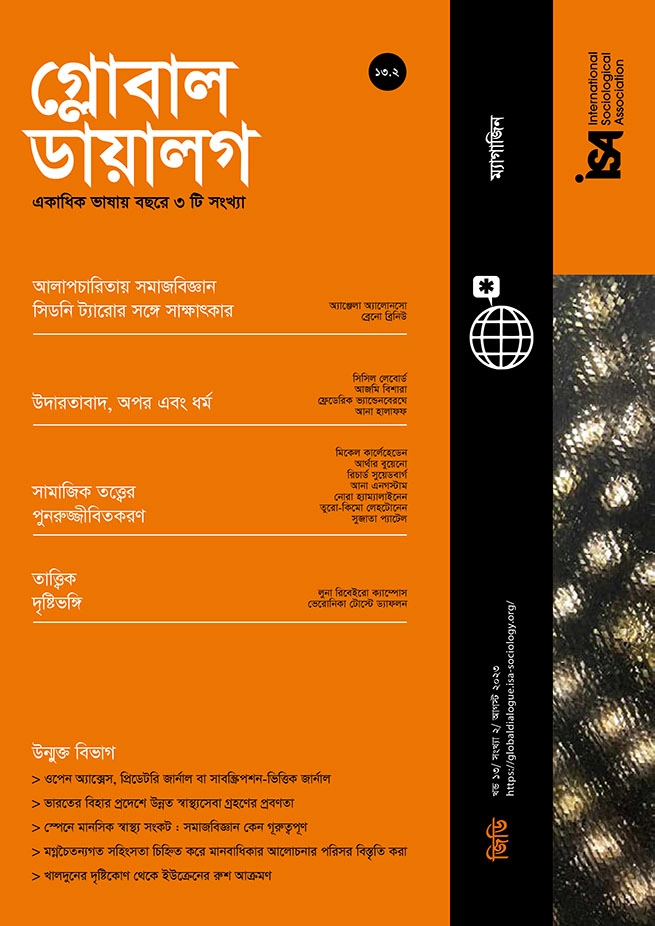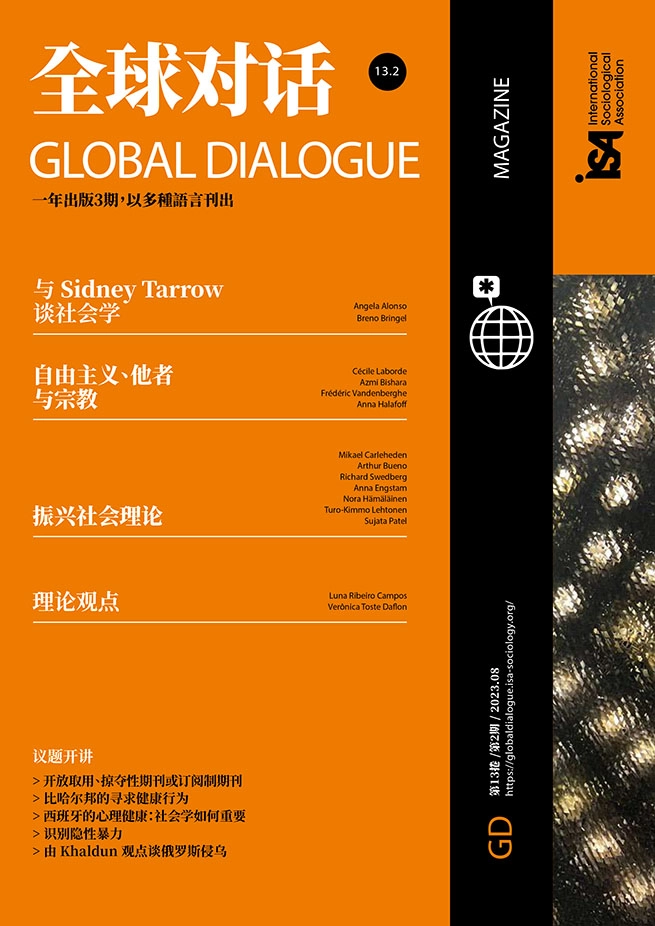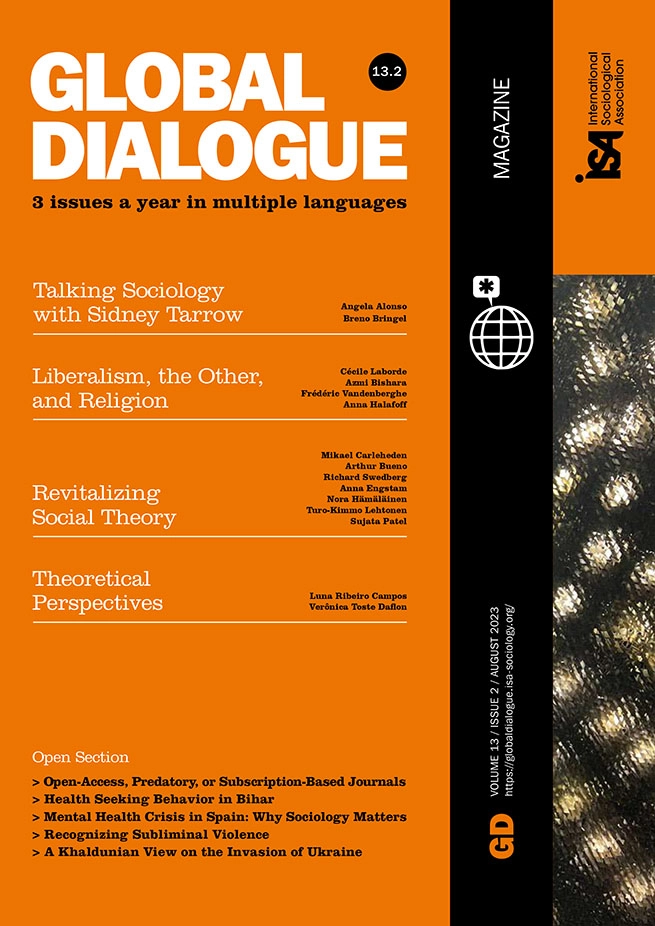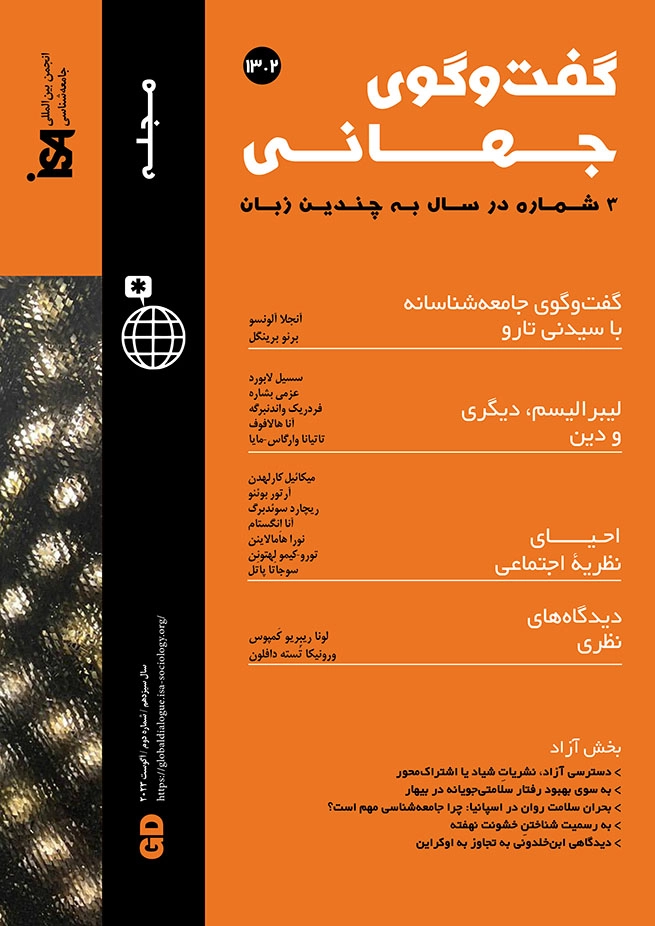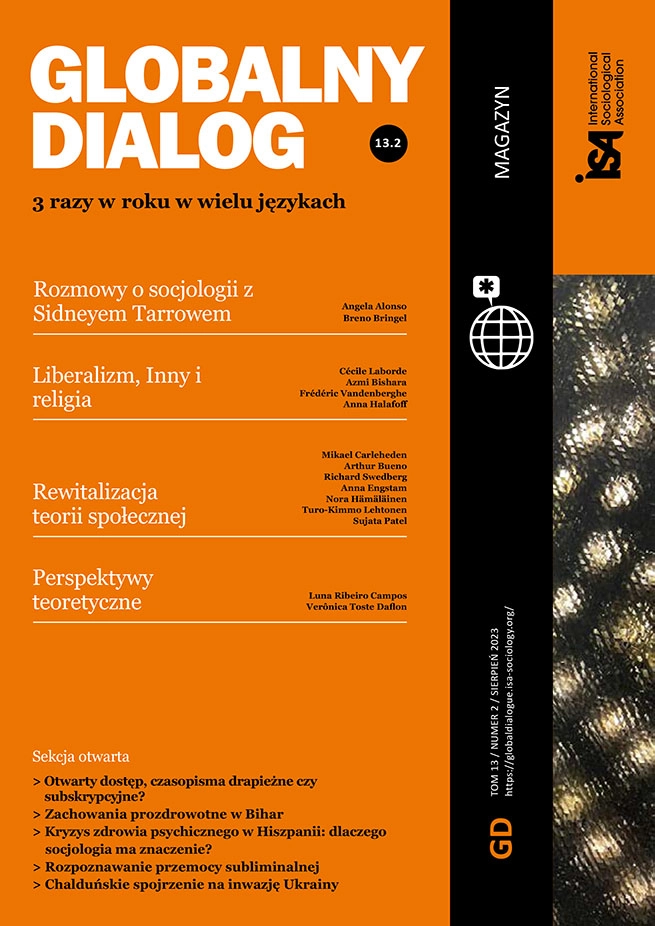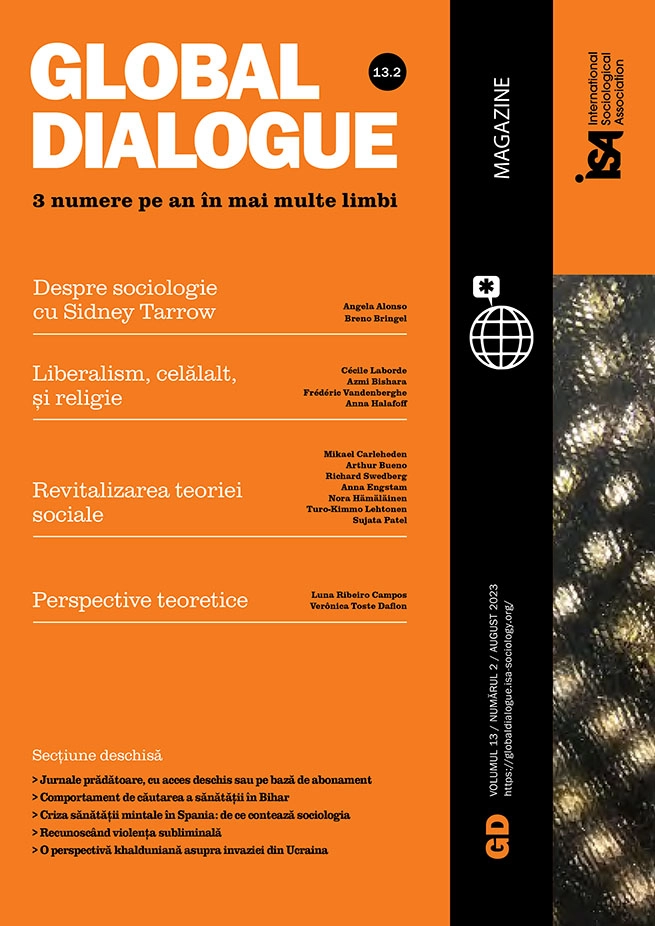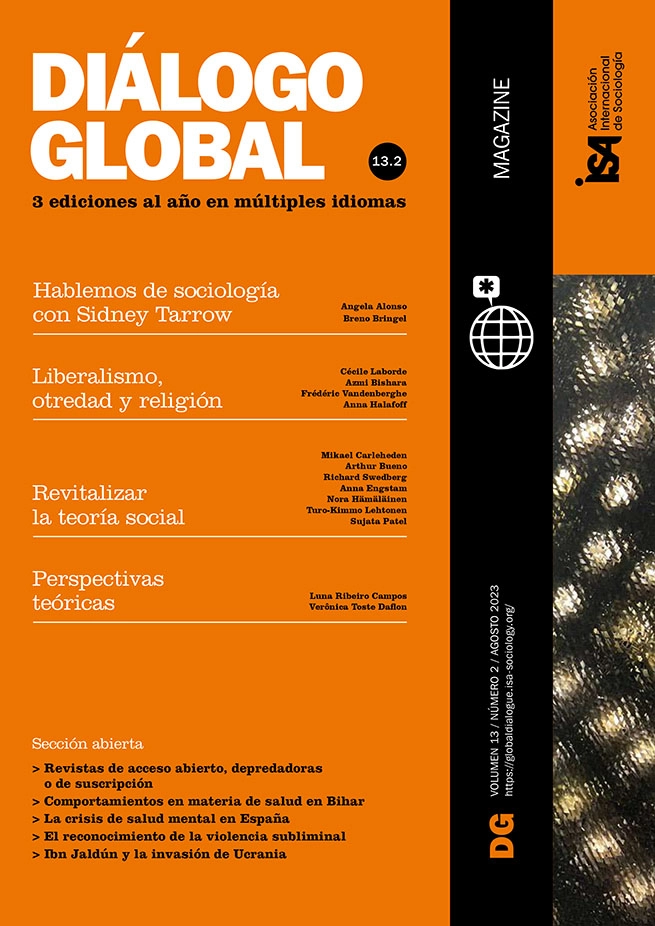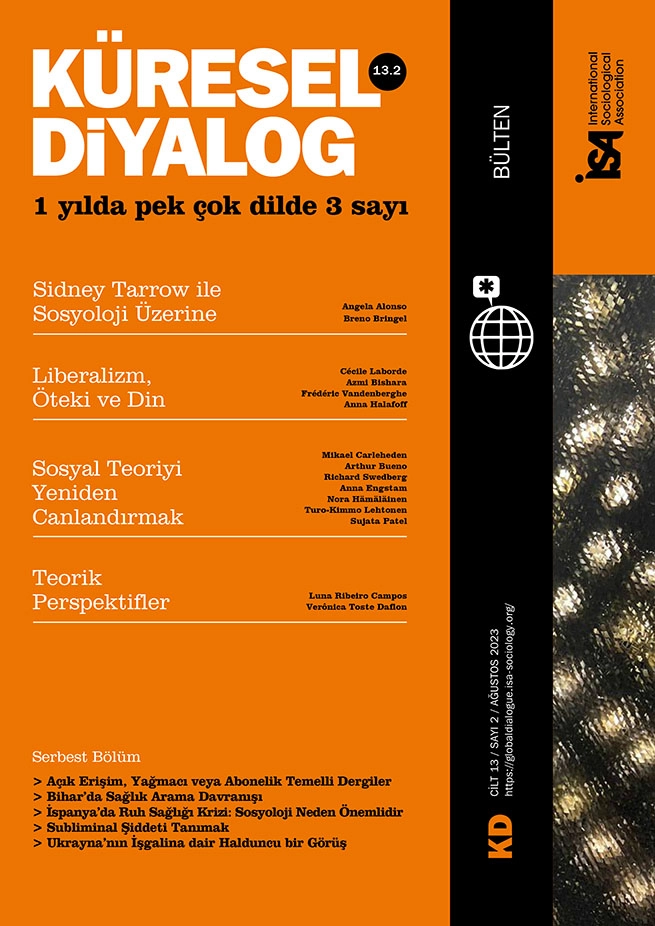Rethinking the Relationship Between Movements and Parties An Interview with Sidney Tarrow
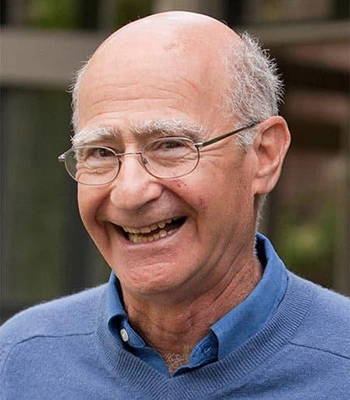
June 13, 2023
Sidney Tarrow is Maxwell M. Upson Professor Emeritus in the Government Department at Cornell University, where he specializes in social movements, contentious politics, and legal mobilization. His work, in political sociology and comparative politics, is known worldwide. His extensive and outstanding trajectory begins in the 1960s. Since then, he has not ceased to contribute to the debate on social movements. His best-known book, Power in Movement, was republished in a new, updated edition last year, including new chapters and a new conclusion considering contemporary events and recent scholarship. Tarrow has recently published the book Movements and Parties: Critical Connections in American Political Development (Cambridge University Press, 2021), seeking to answer questions such as: How do social movements intersect with the agendas of political parties? When integrated with parties, are they co-opted, or are they more radically transformative? While the book’s focus is on American politics, it contributes to discussions of wider interest. It serves as the basis for this interview.
Professor Tarrow is interviewed here by Angela Alonso and Breno Bringel, both leading social movement scholars in Brazil with a broad international trajectory. Angela Alonso is Professor of Sociology at the University of Sao Paulo. Her research and publications focus on the relations between culture and political action and on social and intellectual movements. She is the author of the book The Last Abolition: The Brazilian Antislavery Movement, 1868-1888, Cambridge University Press, 2021). Breno Bringel is Professor of Political Sociology at the Institute of Social and Political Studies at the State University of Rio de Janeiro and Senior Fellow at the Universidad Complutense de Madrid, Spain. His recent research focuses on social movements and ecosocial transitions, and Latin American thought. His next book, with Miriam Lang and Mary Ann Manahan, is Beyond Green Colonialism: Global Justice and the Geopolitics of Ecosocial Transitions (Pluto Press, forthcoming).
Angela Alonso and Breno Bringel (AA & BB): Can you summarize the advantages and difficulties of analyzing movements and parties in relational terms?
Sidney Tarrow (ST): To answer this question properly, I need to go back to my PhD research in Southern Italy in the long-ago 1960s. For young progressives like me, movements were outside the polity and were good, while parties were inside and were bad. But when I encountered the Communist Party’s relations with the peasant movement – which had exploded in the region after World War II, this seemed wrong: there were movement-like features of the party in the South that were no longer present in the North, where a well-structured labor movement accompanied the party. The dilemma of the party in the rural South was that it tried to implement a strategy that was designed for an advanced industrial country. My first book, Peasant Communism in Southern Italy, published in 1967, was an attempt to understand the contradiction between the party in the North and in the South, and tried to explain its failures in the latter region.
Two decades later, inspired by the work of Charles Tilly, and Doug McAdam, I turned back to Italy with an effort to understand its cycle of contention in the 1960s and 1970s in a book called Democracy and Disorder (1989), which employed the then-new methodology of protest event analysis. Unlike sociologists like Alberoni, who still saw movements outside of politics, I found deep connections between what was happening in the streets and what was happening in the party system. These two experiences led me to participate in the foundation of what came to be called “the political process” approach to social movements.
And more recently, another twenty years later, terrified by the critical juncture of the election of Donald Trump to the presidency, I turned away from Europe to carry out research on the anti-Trump resistance in the book The Resistance (2018), edited with David S. Meyer, and then to the book we are discussing in this interview, Movements and Parties. In this book, I argued that the relationship between movements and parties has been central to American democratization – at times expanding it and at other times, like now, threatening it.
To summarize these experiences, I found that studying movements and parties in relation to each other gave me the advantage of looking outside the institutional world of political parties and helped me to understand why parties have often behaved in ways that were unfortunate for their electoral fortunes: they did so because they were trying to appeal to a more ideological movement base. The “difficulty” in your question was that I was trying to talk to two traditions that used different methodologies, and that saw the political system in different ways. This was more of a “trouble” in the United States than in Latin America, which might help to explain why my work has had a positive reaction in your continent.
AA & BB: In recent years one way of understanding the relationship between parties and movements has been through the concept of movement parties. What is your position on this concept?
ST: In Europe, the concept was defined narrowly by Kitschelt in his 2006 chapter, thinking mainly of the Green parties in Western Europe. Then, in 2017, it was defined more broadly by della Porta and her collaborators in their book on Movement Parties Against Austerity. Closer to my own concept is Santiago Anria’s recent book on the Bolivian MAS.
The concept – if not the exact wording – is more familiar in Latin America than in the US, but as my book argues, movement parties have appeared throughout American history – starting with the link between the Abolitionists and the Republican Party in the 1850s, as Angela knows well from her own book on antislavery.
To define the term analytically, it is important to begin with each part separately. Parties, as I argue in my book, are primarily transactional in that they seek to gain or retain power. Movements are more ideological. This means that a movement party has both ideological and transactional reflexes. This conflict is most often resolved by movement parties turning to institutionalization in order to survive. When they do not, they often split – as the American Populist Party did in the 1890s, when one faction supported the Democratic candidate, William Jennings Bryan, and the other insisted on its agrarian movement strategy.
Exceptions, such as the MAS in Bolivia, are rare and depend on forms of organization that can accommodate both their movement and their party reflexes. In the United States, the Democratic Party maintained this dual character in the 1930s as the labor-based faction took hold in the North and the segregationist faction remained in control in the South. But this eventually led to a split when the more progressive faction joined the civil rights movement in the 1960s and the segregationist faction moved to the Republican Party, where it remains today.
AA & BB: Your book also emphasizes the importance of the dynamic interaction between movements and countermovements. This approach takes on a dramatic tone in the book when it comes to the Trump phenomenon and the movements that support and oppose him. How did the contemporary political conflicts in the United States influence your research agenda at the point where you decided to devote a significant part of the book to this topic? In other words, how do you see the relationship between current political events and the academic agenda?
ST: Much of the work on countermovements focuses on right-wing movements, but I find this operationalization reductive. In the US, this has been common in research on the Tea Party and today’s MAGA (Make America Great Again) movement. Both have mostly been described as movements representing people who are experiencing the costs of social and racial change. A second descriptive dimension often added is between high and low levels of politicization. Italians like Alfio Mastropaolo emphasize the anti-political nature of many far-right voters, and supporters of Donald Trump often claim that what they like about him is that he is “not a politician.”
In my book, I use the term countermovement, as David S. Meyer and Suzanne Staggenborg do in their important 1996 article, to characterize how the rise and apparent success of one movement – whether left or right – triggers the reciprocal rise of an opposing movement. For example, in our collaborative work, The Resistance, David Meyer and I characterized the rise of the anti-Trump resistance as a countermovement.
What seems to be crucial about countermovements on both the left and the right is that they are, to a large extent, captured by the discourse and scope of action of the movement they have risen to oppose. For example, the anti-scientific discourse of the anti-vaccine movement in the United States has influenced a pro-vaccine movement that draws on the testimony of doctors, scientists, and public health experts to counter the anti-scientific ideology of its opponents.
But many of these movements have grown in the shadow of both pre-existing and broader ideological movements. For example, when social scientists have tracked the rate of COVID-19 hospitalizations and deaths, they have found that it closely tracks the level of support for Trumpism in the electorate. States that gave Trump a large majority of their votes also have the highest rates of COVID hospitalizations and deaths. These current political events affect the academic agenda, and we need to provide answers.
AA & BB: Many social scientists had viewed democratic and authoritarian institutions as corresponding to different types of societies. Later, a wave of studies emphasized particular “political cultures” as responsible for either authoritarian or democratic political paths. Your book looks for political mechanisms that explain the interactions between movements and parties in culturally very different countries, such as Chile, Italy, South Korea, and the United States, without relying on values or beliefs. Does your book question the concept of political culture?
ST: This question takes me back to the beginning of my career, when Gabriel Almond and his collaborators developed the concept of “political culture.” They saw the United States as what they called a “civic culture,” defined as one in which agreement on the rules of the democratic game outweighed differences in policy. They defined Italy as a “subject political culture,” lacking this agreement on fundamentals. Their Italian colleague Giovanni Sartori went further, defining his country as a “centrifugal democracy,” as opposed to “centripetal” ones like Britain or the United States. The greatest threat to democracy, they argued, was the Communist Party, which I had studied in southern Italy. I tested these ideas by comparing the attitudes to democracy of so-called “centrifugal” Communist and centrist Christian Democratic voters, and found that the former had much greater confidence in democracy than the latter. From then on, I became suspicious of definitions of democracy based on political culture and began to look for mechanisms that support or undermine democracy.
In Movements and Parties, among other things, I looked briefly at post-Pinochet Chile, which North American writers had considered a “strong” democracy based on its strong party system and the “democratic” belief systems of its voters. But Chile, as you know, was a political system with very little vertical accountability. Accountability was a key to ensuring democracy, and as we now know, the system was much weaker than it seemed to the advocates of the importance of political culture. So, both at the beginning and at the end of my academic career, I was doubtful about the importance of political culture.
AA & BB: Movements and countermovements are also related to processes of democratization and de-democratization, as Tilly argued. For a long time, we have seen these processes as waves related to different temporalities. But how do we deal with the ambiguity, complexity, and contradictory elements of contentious politics, that is, democratization in some aspects and de-democratization in others during the same historical period?
ST: Tilly was one of the few North American scholars of democracy who also studied social movements. It is striking that the wave of studies of the current crisis of democracy in the United States never refers to his book Democracy (2007). But this book inspired me to try to link my work on movements and parties to the dynamics of democratization and counter-democratization.
The historical cases I studied taught me that pro-democratic and anti-democratic movements often overlap at the same critical junctures. To put this in the terminology that Breno uses in his own work, I would say that ‘political cycles’ with high levels of public engagement, such as the current one in the United States, are likely to produce both anti-democratic and pro-democratic moments at the same time.
In writing Movements and Parties, I encountered several such intersections in US history. First, as the pro-women’s suffrage movement developed in the early twentieth century, an anti-women’s suffrage movement arose to oppose it. Second, the Great Depression of the 1930s produced both a movement to expand democracy – Roosevelt’s New Deal – and several anti-democratic movements, such as the anti-Semitic movement of radio priest Father Coughlin. And, of course, the civil rights movement of the 1960s led to a widespread anti-Black rights movement. These were not just movement/counter-movement interactions: both sides mobilized in the name of what they considered to be democracy.
Let me complete my answer by referring to the Trump/anti-Trump dynamic – which culminated in the attack on the Capitol on January 6, 2021. On that occasion, progressives like me saw the mob that helped Trump launch an autogolpe (a term that entered English as a result!) as an expression of authoritarianism. And it is true that Trump and his enablers wanted to overturn the results of a legitimate and overwhelming electoral victory by Joe Biden. But if we listen carefully to the rhetoric of the insurgents who attacked the Capitol in support of Trump’s false election claims, many of them justified their violent actions in the name of democracy and freedom.
AA & BB: When you talk about contemporary society, you point out how increasing inequality affects collective action. But the intellectual tradition to which you belong has set aside the relationship between social class and political action as a central problem to be addressed. How do you see this issue now?
ST: You are right that the political process approach tended to underestimate the importance of structural factors such as inequality, class, and even capitalism in contentious politics. This was in part because scholars like me were reacting against the tendency in the neo-Marxian tradition to reduce all forms of contestation to reactions to capitalism (note that this is still largely true of the world-systems approach of Immanuel Wallerstein and Giovanni Arrighi and their disciples). The focus on political and institutional factors such as the opportunity structure led to an underestimation of the deeper influence of class and class conflict.
In recent years, with the work of della Porta and her collaborators on the Great Recession and the ensuing austerity policies in Europe, there has been a return to the study of class and inequality as driving forces of movement mobilization. There is also a revival of Marxism as a master key to interpreting movement mobilization in the work of the Manchester School, including two Americans – Jeff Goodwin and John Krinsky. And in the fourth edition of Power in Movement, I have tried to redress the balance to some extent.
AA & BB: In our conversation, we talked a lot about bridges between the United States, Latin America, and Europe. Fortunately, these dialogues have grown, and social movement studies have become more global. What do you think is still missing to have more (and better) global dialogues on contemporary social movements?
ST: Too many things to mention in this short interview. Apart from the careful work of scholars like Hansperter Kriesi and Donatella della Porta, there is a lack of structured cross-regional comparisons; apart from the historical reconstructions of scholars like Steven Levitsky and Daniel Ziblatt, there is a lack of cross-national comparisons of how populist movements have attacked and destroyed democracy. And apart from the pioneering work of a few younger scholars, there is a dearth of cross-regional research on the intersection between movements and the legal system.
But if I had to guess, I think the next step in comparing movements across continents would be to move beyond micro- and meso-analytical perspectives to the macro-structural effects of contentious politics. Donatella della Porta and her group in Florence have begun to take this step, growing out of their work on the anti-austerity movements in post-recession Europe, but apart from these scholars, few have attempted to return to the macro-structural perspectives that characterized earlier decades of social movement research without losing the valuable insights of today’s political process approaches. I look forward to the next generation’s progress in this direction.
Sidney Tarrow, Cornell University, USA <sgt2@cornell.edu>


